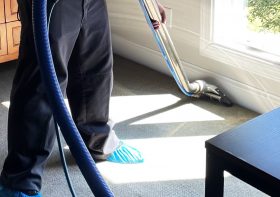What is ‘green’ dry cleaning? A toxics expert explains

In recent years, the traditional dry cleaning industry has undergone a revolutionary transformation, with a growing emphasis on sustainability and environmental consciousness. The advent of ‘green’ dry cleaning represents a significant stride towards minimizing the ecological footprint associated with conventional methods. To unravel the intricacies of this eco-friendly approach, we turn to the insights of a toxics expert.
Dry cleaning, a process that uses a chemical solvent instead of water to clean garments, has long been associated with environmental concerns due to the use of perchloroethylene (PERC), a solvent known for its adverse health and environmental impacts. ‘Green’ dry cleaning aims to address these issues by adopting alternative methods and solvents that are less harmful to both human health and the planet.
The cornerstone of ‘green’ dry cleaning lies in the abandonment of PERC in favor of more sustainable alternatives. One such alternative gaining popularity is liquid carbon dioxide (CO2) cleaning. In this method, pressurized CO2 is used as a solvent, offering an effective and environmentally benign solution. Unlike PERC, liquid CO2 is non-toxic, non-flammable, and does not contribute to air pollution, making it a much safer option for both workers and consumers.
Another noteworthy alternative is wet cleaning, a water-based process utilizing specialized equipment and biodegradable detergents. Wet cleaning eliminates the need for toxic solvents altogether, relying on water as the primary cleaning agent. This method not only sidesteps the environmental hazards associated with traditional dry cleaning but also significantly reduces energy consumption.
To delve deeper into the realm of ‘green’ dry cleaning, it is essential to understand the environmental and health implications of conventional methods. PERC, despite being an effective solvent, poses serious health risks. Prolonged exposure can lead to respiratory issues, dizziness, and even adverse effects on the central nervous system. Furthermore, PERC is classified as a hazardous air pollutant, contributing to air pollution and soil contamination.
In contrast, ‘green’ alternatives prioritize the well-being of both the environment and those involved in the dry cleaning process. The use of non-toxic solvents such as liquid CO2 and water-based detergents ensures a safer working environment for dry cleaning professionals. Additionally, these alternatives do not release harmful chemicals into the air, minimizing the risk of exposure for both workers and customers.
Beyond health considerations, the environmental impact of ‘green’ dry cleaning is a crucial aspect of its appeal. The carbon footprint associated with traditional dry cleaning is largely attributed to the energy-intensive processes and the disposal of hazardous waste. ‘Green’ methods, particularly those using liquid CO2 and wet cleaning, significantly reduce energy consumption and eliminate the generation of hazardous waste.
Liquid CO2, being a byproduct of existing industrial processes, is readily available and does not require additional energy-intensive manufacturing. This inherent sustainability makes it an attractive choice for environmentally conscious dry cleaners. Similarly, wet cleaning relies on water, a readily available and renewable resource, further minimizing the ecological impact.
Despite the evident benefits of ‘green’ dry cleaning, challenges persist in its widespread adoption. One notable hurdle is the upfront cost of transitioning to eco-friendly methods and equipment. Dry cleaning businesses may face financial constraints in making the necessary investments, hindering the seamless integration of sustainable practices.
To overcome this challenge, governmental incentives and industry support are crucial. Policymakers can play a pivotal role in promoting the adoption of ‘green’ practices by offering financial incentives, tax breaks, or subsidies to businesses making the transition. Additionally, industry associations can provide guidance, resources, and shared infrastructure to facilitate a smoother shift towards sustainability.
In conclusion, the advent of ‘green’ dry cleaning marks a significant step towards a more sustainable and environmentally friendly industry. Through the abandonment of hazardous solvents like PERC and the embrace of alternatives such as liquid CO2 and wet cleaning, the dry cleaning sector can contribute to a healthier planet and safer working conditions. With the right incentives and support, the widespread adoption of ‘green’ practices can become a reality, heralding a new era for the dry cleaning industry—one that prioritizes both fashion and environmental responsibility.




Leave a Reply